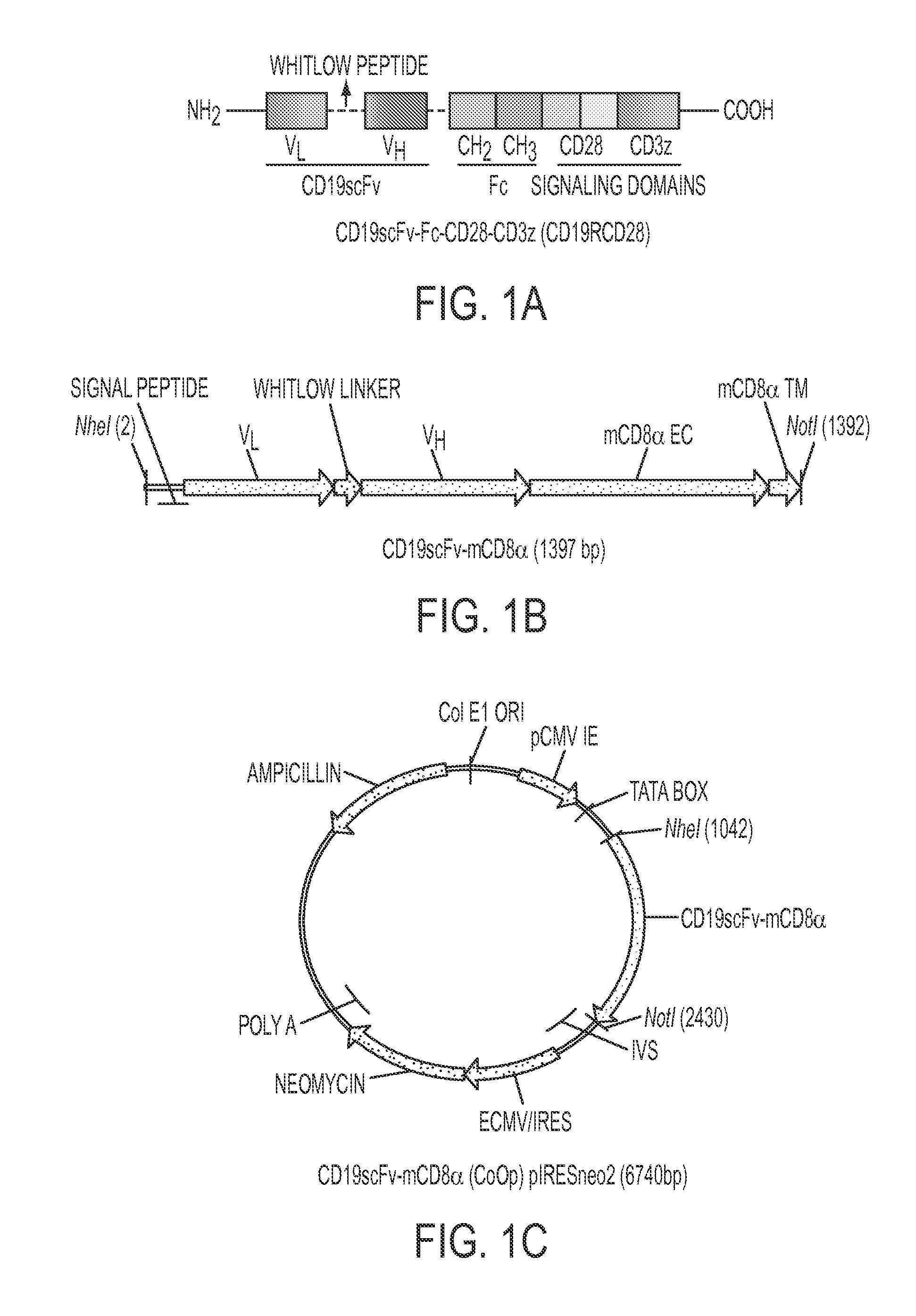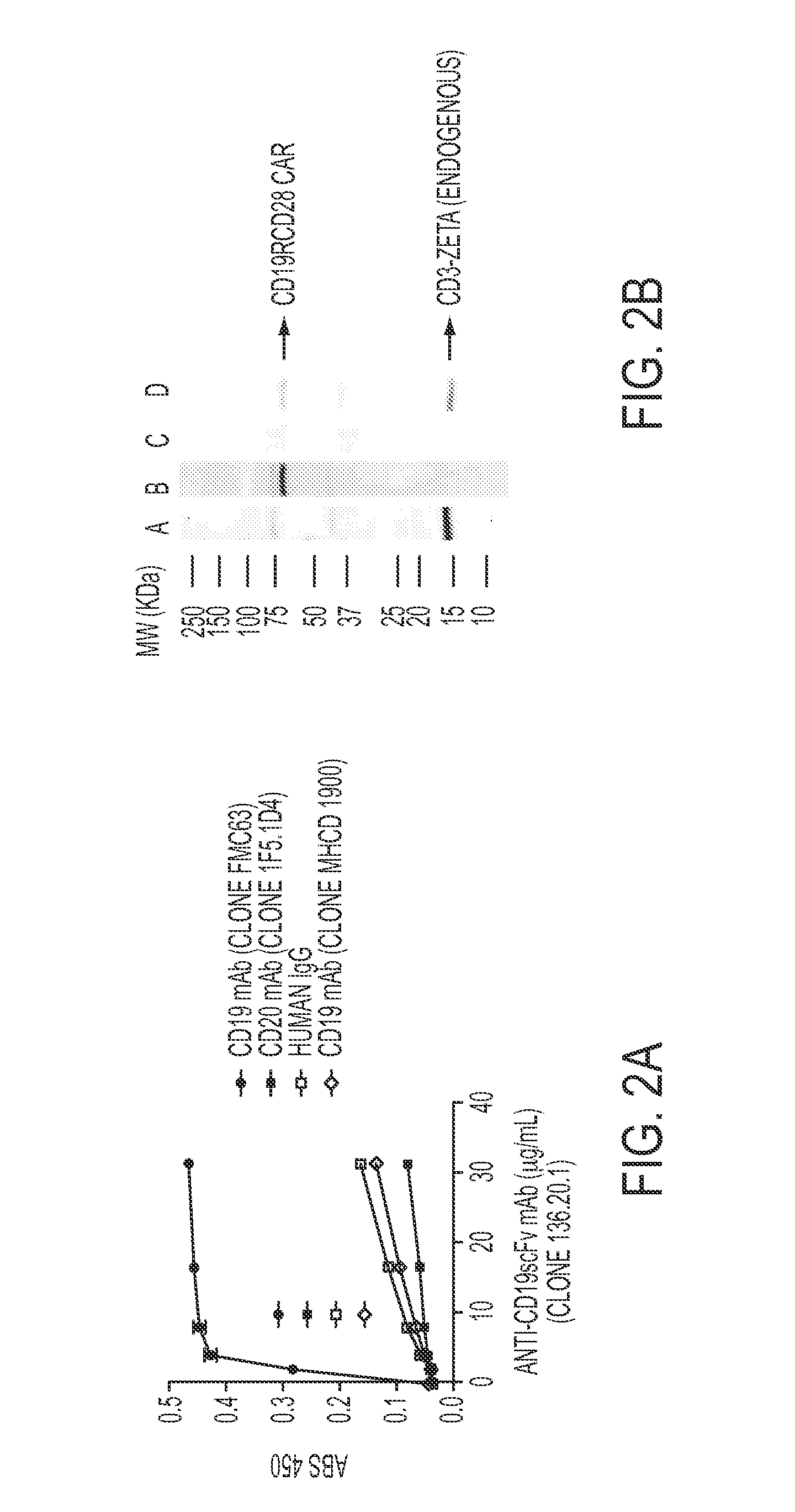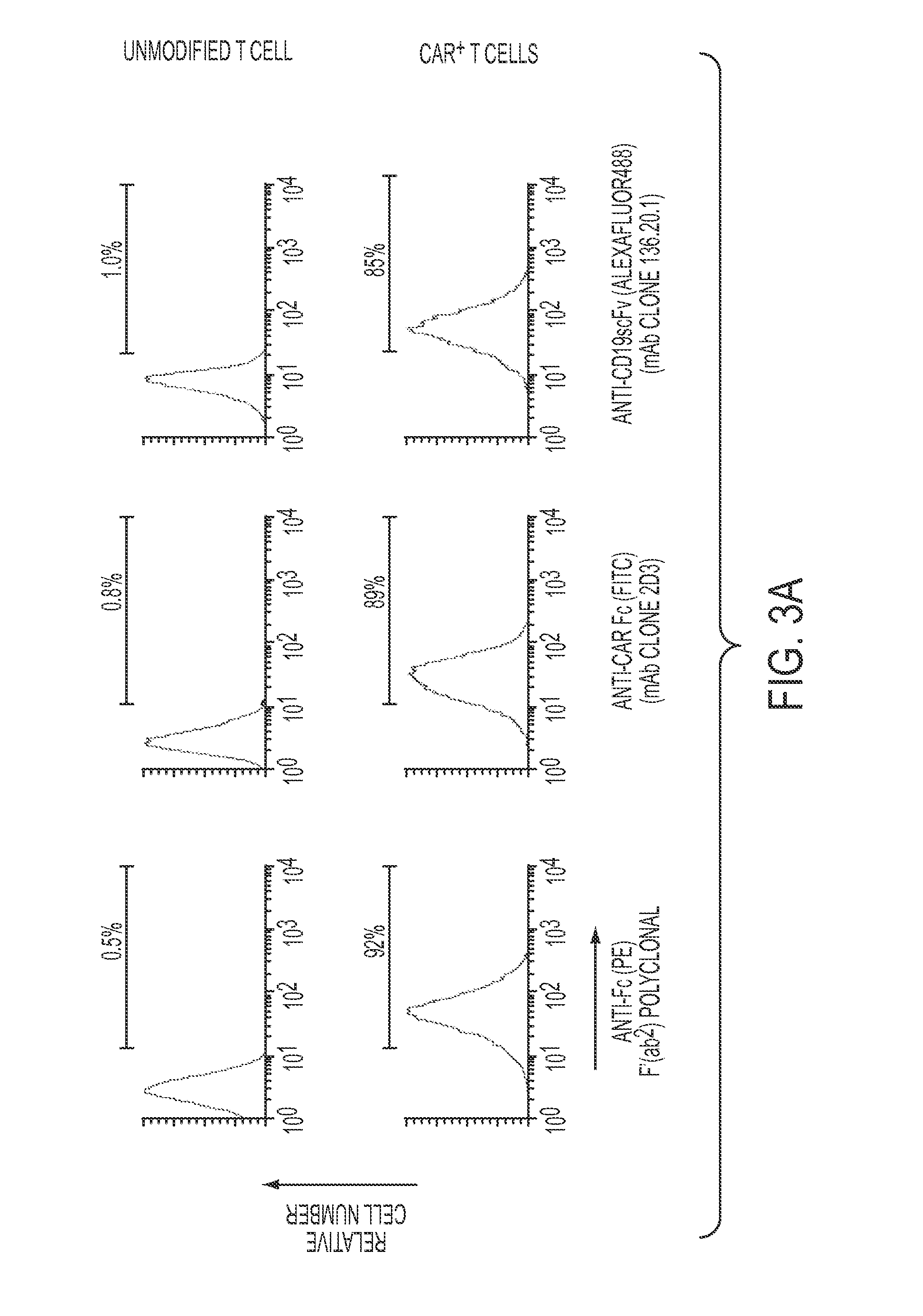Chimeric antigen receptor-targeting monoclonal antibodies
a chimeric antigen receptor and monoclonal antibody technology, applied in the field of molecular biology, gene therapy, medicine, etc., can solve the problems of not being able to retrieve genetically modified t cells from recipients for multi-parameter analysis, and preventing the direct assessment of circulating car-modified t cells in vivo after infusion, so as to achieve the effect of being readily understandabl
- Summary
- Abstract
- Description
- Claims
- Application Information
AI Technical Summary
Benefits of technology
Problems solved by technology
Method used
Image
Examples
example 1
CD19 CAR-Targeting Monoclonal Antibody—Methods
[0102]Ethics Statement.
[0103]All experimental procedures pertaining to the use of animals were performed according to the U.T. MD Anderson Cancer Center Institutional Animal Care and Use Committee (IACUC) guidelines and were carried out by the MD Anderson Hybridoma core lab (IACUC approval no. 11-071-2533). All efforts were made to reduce suffering to the animals caused by any experimental procedure. Isoflurane (2-5%) were used as anesthesia whenever required. Details of animal care, anesthesia use and sample collection are provided in separate paragraph. For the peripheral blood mononuclear cells (PBMC) used in the study, blood samples were obtained from healthy volunteers under the protocol title “Acquisition of peripheral blood from healthy volunteers” that aimed to investigate the immunobiology of lymphocytes such as T cells in general and genetically modified T cells in particular (approval obtained from U.T. MD Anderson Cancer Cent...
example 2
CD19 CAR-Targeting Monoclonal Antibody—Results
[0134]Generating anti-ScFv mAb recognizing CD19RCD28 CAR.
[0135]BALB / c mice were immunized using L cells (derived from C3H / An mouse strain) genetically modified to express the scFv region in a CD19-specific CAR (FIG. 7). The scFv was derived from FMC63 (encoded in DNA plasmid CD19scFv-mCD8α) and stably expressed (>90% homogenous expression after single-cell sorting) on the surface of neomycin-resistant genetically modified L cells, which was used to immunize allogeneic mice. The murine CD8α trans-membrane and extra-cellular region were used to display scFv on the surface and to detect expression (FIGS. 1B and 1C). Genetically modified L cells were injected in mice at 3 day intervals and high titer sera (OD values ˜5 times above background at 1:2, 700 dilution) was obtained after five successive immunizations. Hybridomas were generated and ELISA was used to initially select 23 “high binders” (OD450>1.5) and 15 “moderate binders” (OD450˜1.0...
example 3
A Novel CAR-Targeting Functional Monoclonal Antibody (2D3) Amenable for CAR-Mediated Gene Therapy
[0142]Targeting tumor antigens through gene modified immune cells has increasingly been adopted by clinical oncologists, thanks to the ability of these cells to eradicate tumors that have been otherwise refractory to conventional therapies. The clinical trials conducted so far showed encouraging results. There is an increasing demand to place specific reagents so that isolation, activation, and functional characterization of these gene modified cells are possible. In this context, the inventors developed a Chimeric Antigen Receptor (CAR)-specific monoclonal antibody (2D3) that possesses unique ability to detect all chimeric antigen receptor (all CAR)-modified immune cells (FIG. 12). The 2D3 antibody employs the immunoglobulin heavy chain constant region to cross-link the T cell signaling endodomain with antigen binding domain of a CAR. This antibody has multiple functions, such as detect...
PUM
| Property | Measurement | Unit |
|---|---|---|
| concentrations | aaaaa | aaaaa |
| concentrations | aaaaa | aaaaa |
| concentrations | aaaaa | aaaaa |
Abstract
Description
Claims
Application Information
 Login to View More
Login to View More - R&D
- Intellectual Property
- Life Sciences
- Materials
- Tech Scout
- Unparalleled Data Quality
- Higher Quality Content
- 60% Fewer Hallucinations
Browse by: Latest US Patents, China's latest patents, Technical Efficacy Thesaurus, Application Domain, Technology Topic, Popular Technical Reports.
© 2025 PatSnap. All rights reserved.Legal|Privacy policy|Modern Slavery Act Transparency Statement|Sitemap|About US| Contact US: help@patsnap.com



